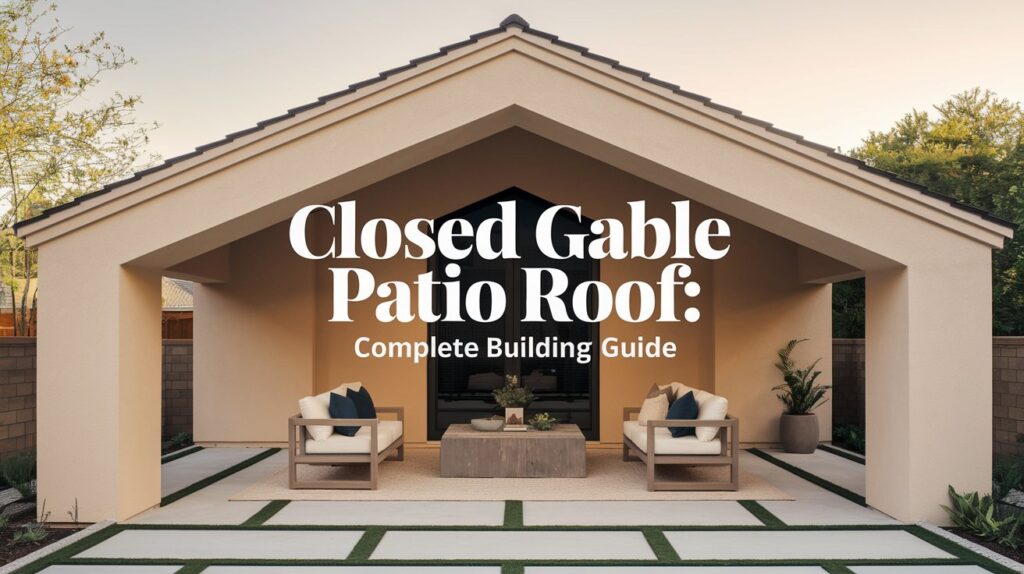The closed gable patio roof is not only an architectural statement, but also gives a greater level of weather protection.
I have helped a variety of homeowners design their outdoor spaces, and I know they love how these structures add value and comfort to their outdoor areas.
I’ll also provide seven different design ideas and present a comprehensive how-to-build guide, including the types of materials, construction methods, and maintenance instructions for your structure.
This will allow you to know how to build your own closed gable patio roof or what to ask a contractor to do.
What Is a Closed Gable Patio Roof?
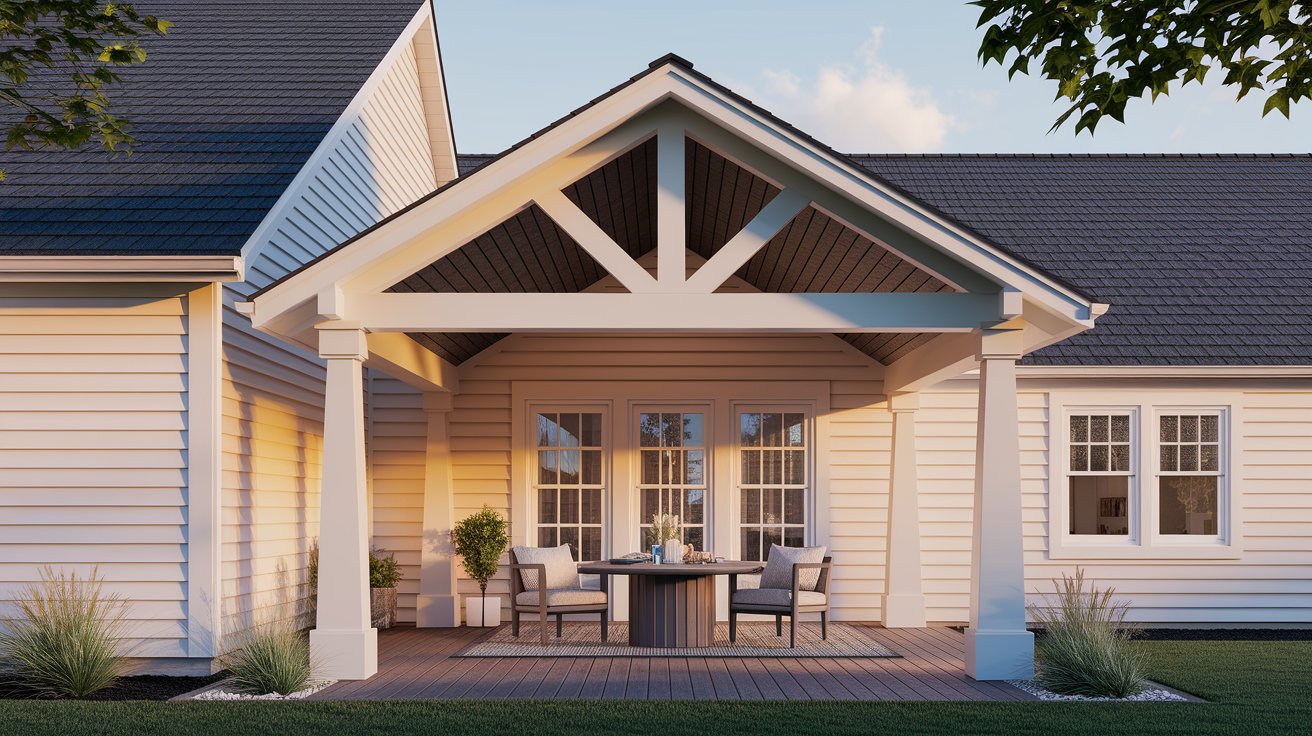
A gable roof has two sloping sides meeting at a ridge line. It differs from hip roofs, which slope on all sides, and skillion roofs with one sloping surface.
The “closed” part means the triangular ends are sealed with cladding rather than left open. This protects against wind, rain, and extreme temperatures while improving insulation.
The sealed ends add structural strength and rigidity to the frame. The finished look appears more polished and works well for both alfresco dining areas and carport applications.
7 Closed Gable Patio Roof Ideas to Inspire Your Design
These seven design variations show how versatile and functional a closed gable patio roof can be for different needs.
1. Raised Gable Roof for Extra Height and Airflow
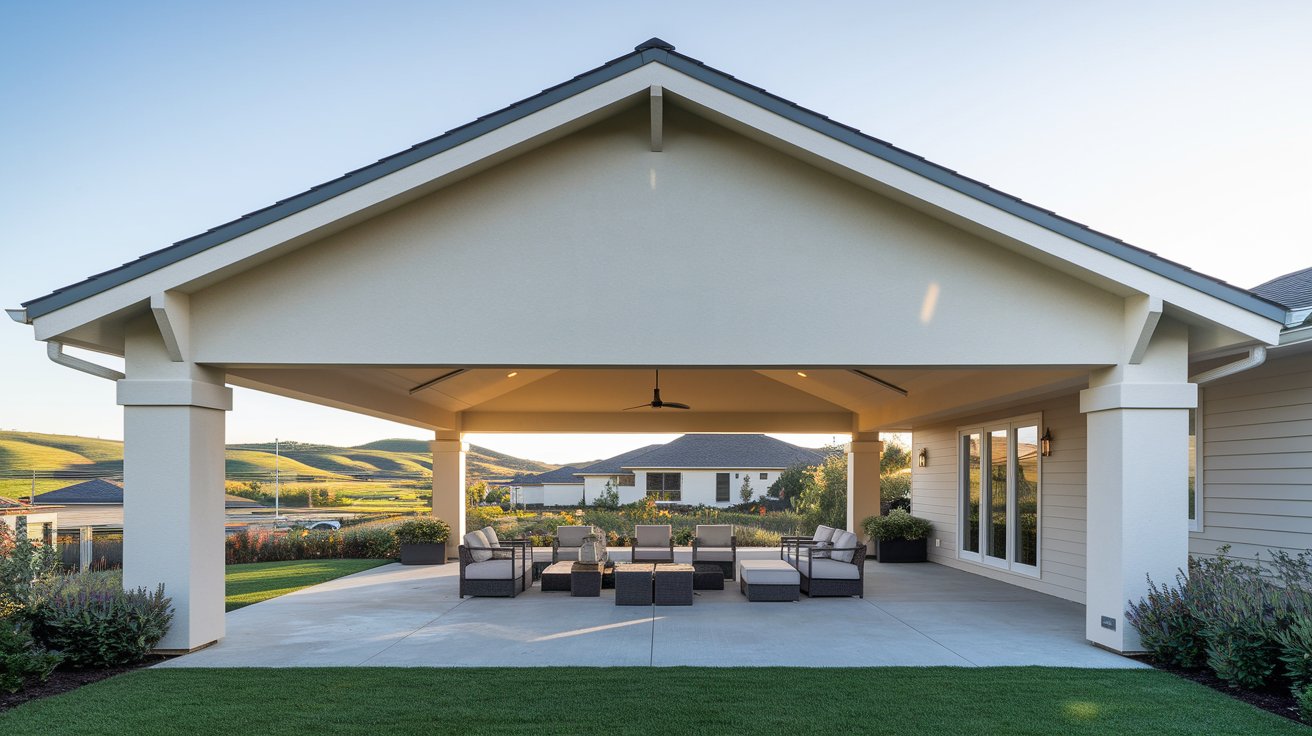
A raised gable sits higher than standard designs, perfect for tall vehicles or spacious alfresco areas. The extra height creates an open, airy feeling and improves ventilation naturally. Hot air rises and escapes more easily.
2. Insulated Closed Gable for Year-Round Comfort
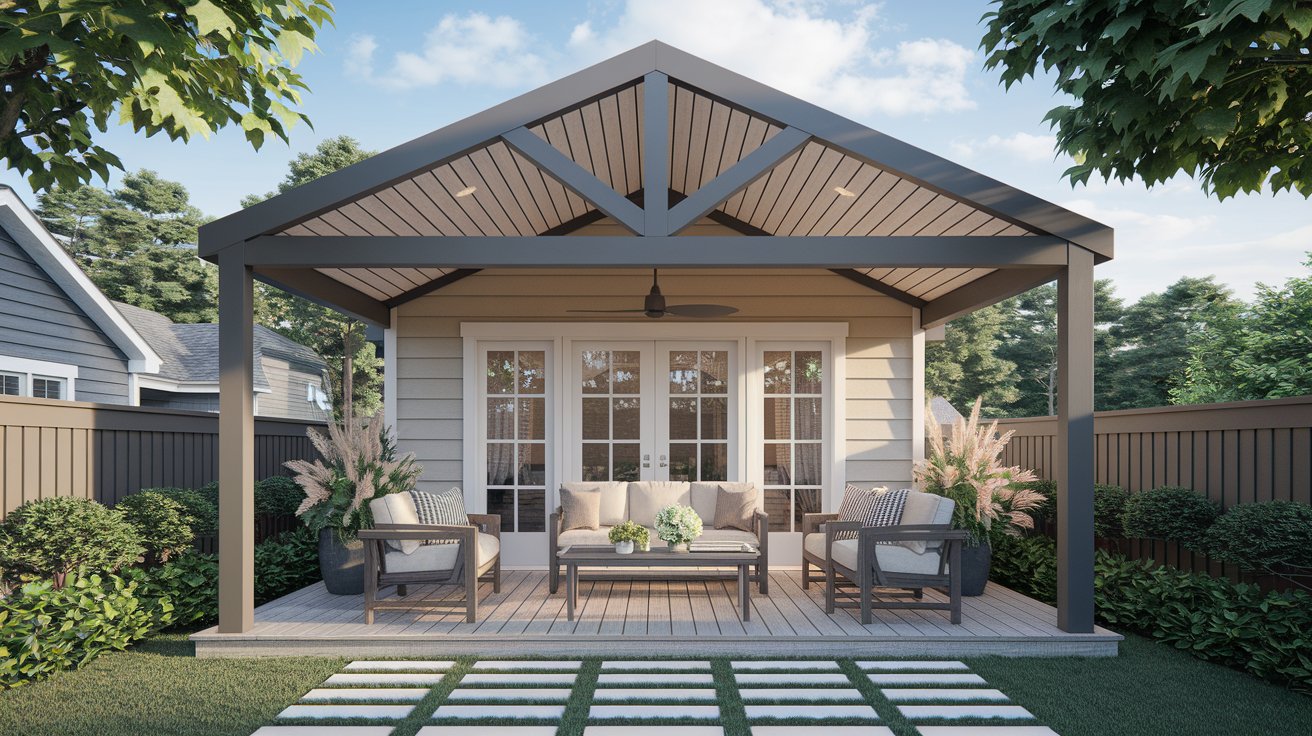
Insulated roofing panels maintain temperature balance throughout the year. They keep heat out during summer and warmth during cooler evenings. Your patio becomes usable in all seasons while reducing noise from rain.
3. Closed Gable with Skylights for Natural Light
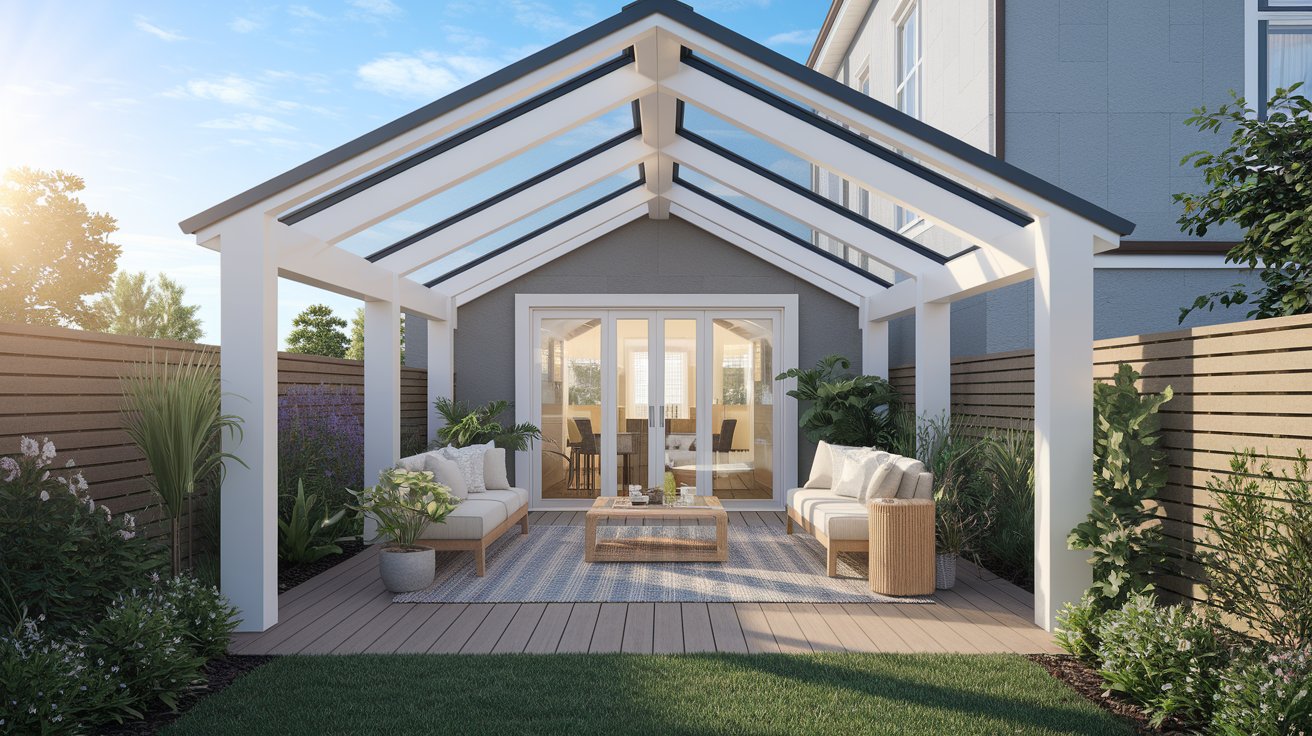
Add skylights or sun tubes to bring in natural light without harsh heat. Your patio stays bright during the day without needing artificial lighting. Position skylights to avoid direct afternoon sun.
4. Timber-Clad Gable Ends for a Warm, Rustic Look
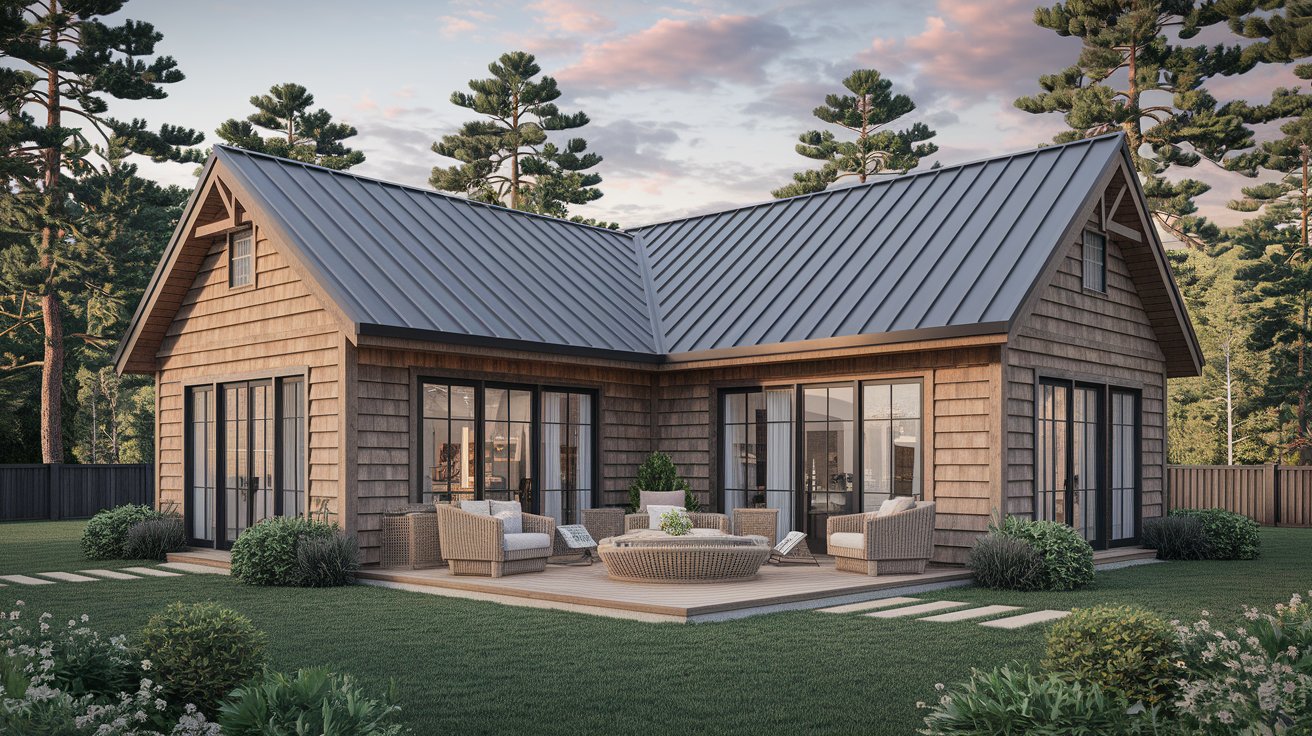
Wood cladding with neutral tones creates a modern farmhouse style. Timber adds visual depth and natural texture. The warm wood contrasts beautifully with metal roofing for a contemporary yet inviting look.
5. Double Gable Roof for Balanced Symmetry
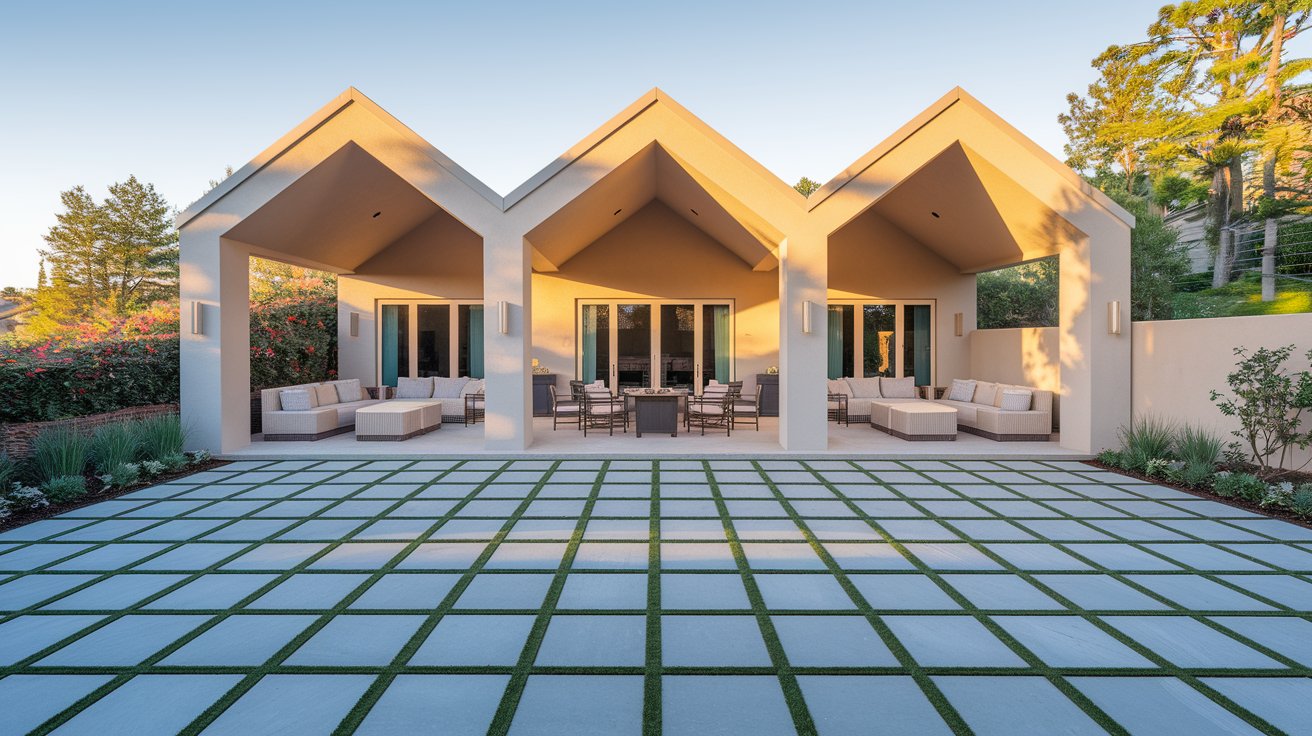
Two gables meeting at a central ridge create a grand, cohesive appearance. This design suits large outdoor entertaining spaces and works well for wraparound patios or large carports.
6. Gable Roof with Outdoor Blinds or Louvres
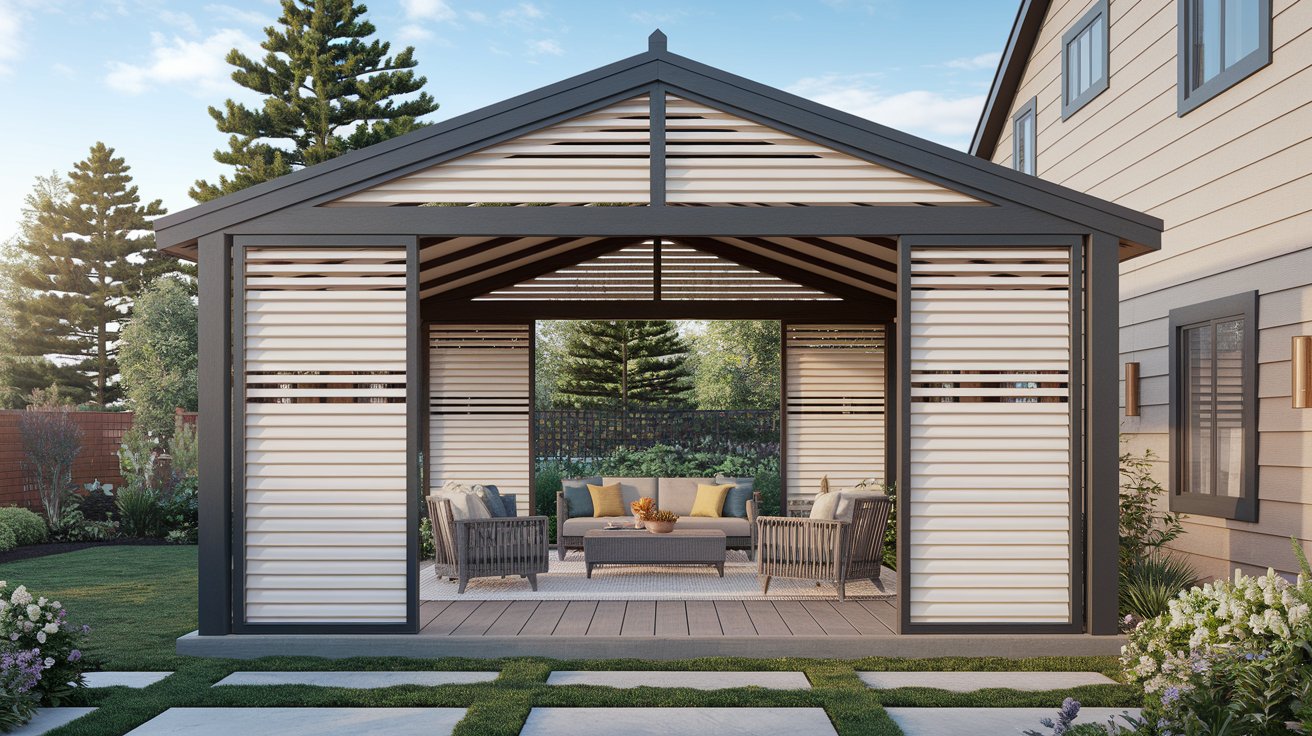
Combine closed gable ends with retractable blinds on open sides for flexible weather control. Roll down blinds for privacy, shade, or wind protection. Open them for cross-breeze and yard connection.
7. Colorbond Closed Gable for a Sleek Modern Finish
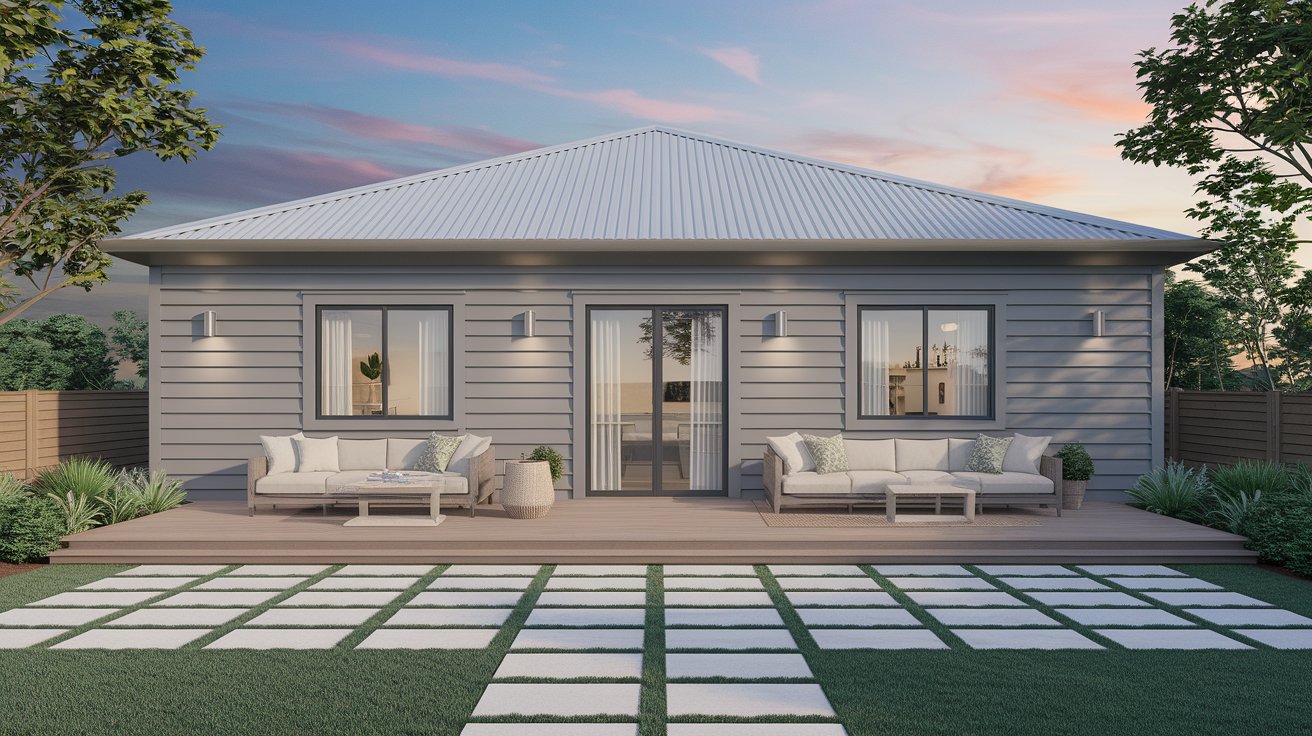
Colorbond steel provides a durable, low-maintenance option that withstands harsh weather without rusting or fading. Choose light-reflective colors like Surfmist, Shale Grey, or Woodland Grey to keep the space cooler.
Step-by-Step Guide to Building a Closed Gable Patio Roof
Follow these seven steps to build your closed gable patio roof from planning through completion.
Step 1 – Plan and Measure Your Space
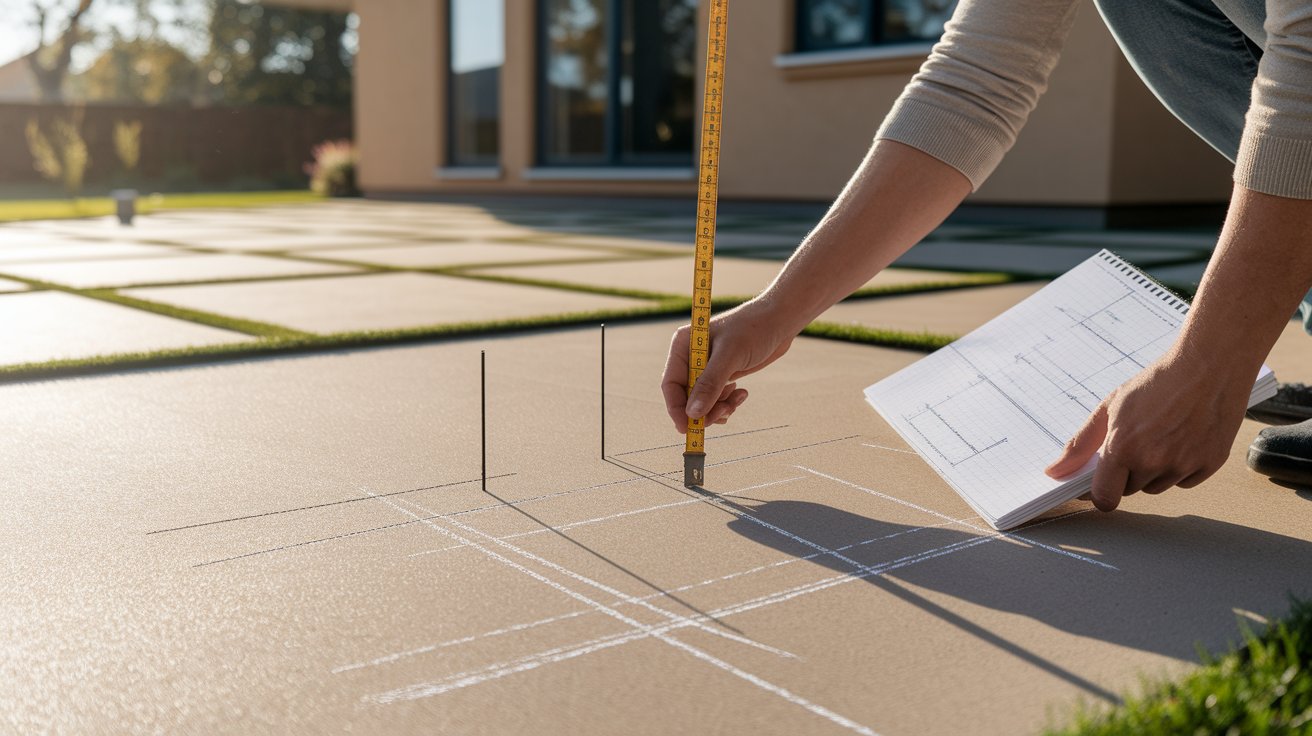
Assess your patio layout carefully. Note where your roofline intersects with the house. Check which direction receives the most sun exposure.
Draw a basic plan with dimensions. Include post locations, roof pitch, and gable end positions. This visualization helps you spot potential problems before starting construction.
Step 2 – Choose the Right Materials
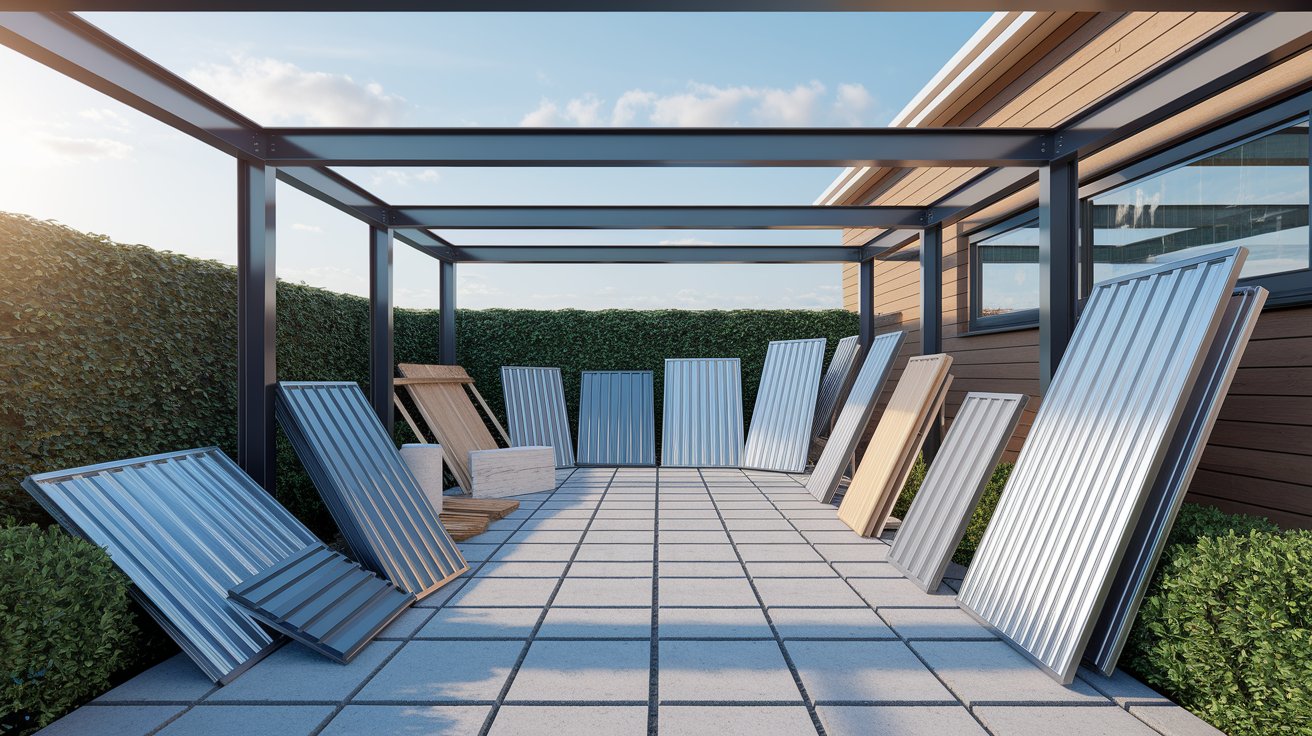
Select between steel, timber, or aluminum frames based on your budget and climate. Steel offers the most strength. Timber provides warmth and character. Aluminum resists corrosion well.
Pick roofing sheets that match your home’s existing roof. Insulated panels cost more but improve comfort significantly.
Choose cladding materials for the gable ends that complement your house exterior.
Step 3 – Prepare the Foundation
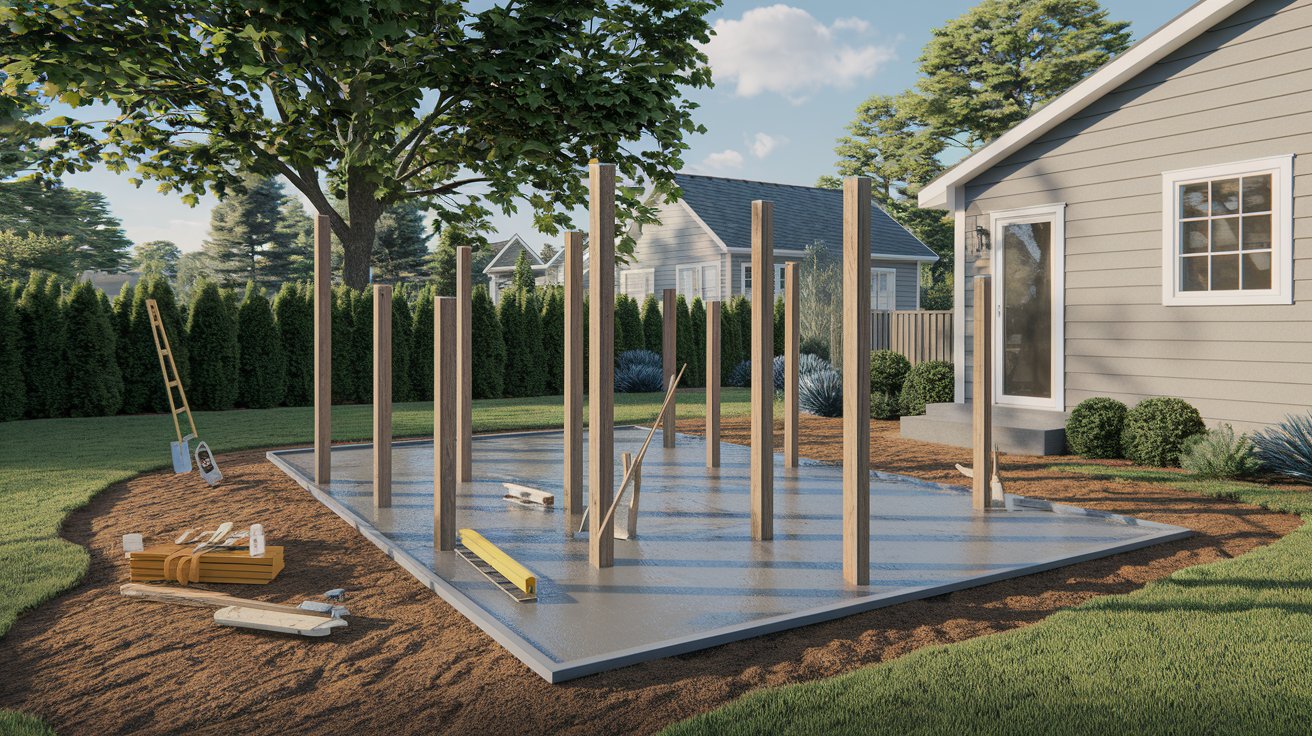
Level the ground where the posts will stand. Pour concrete footings for permanent stability. Each post needs a solid base to prevent settling or movement.
Check drainage before building. Water should flow away from the patio and house. Improper drainage causes water pooling and potential foundation damage.
Step 4 – Build the Frame and Rafters
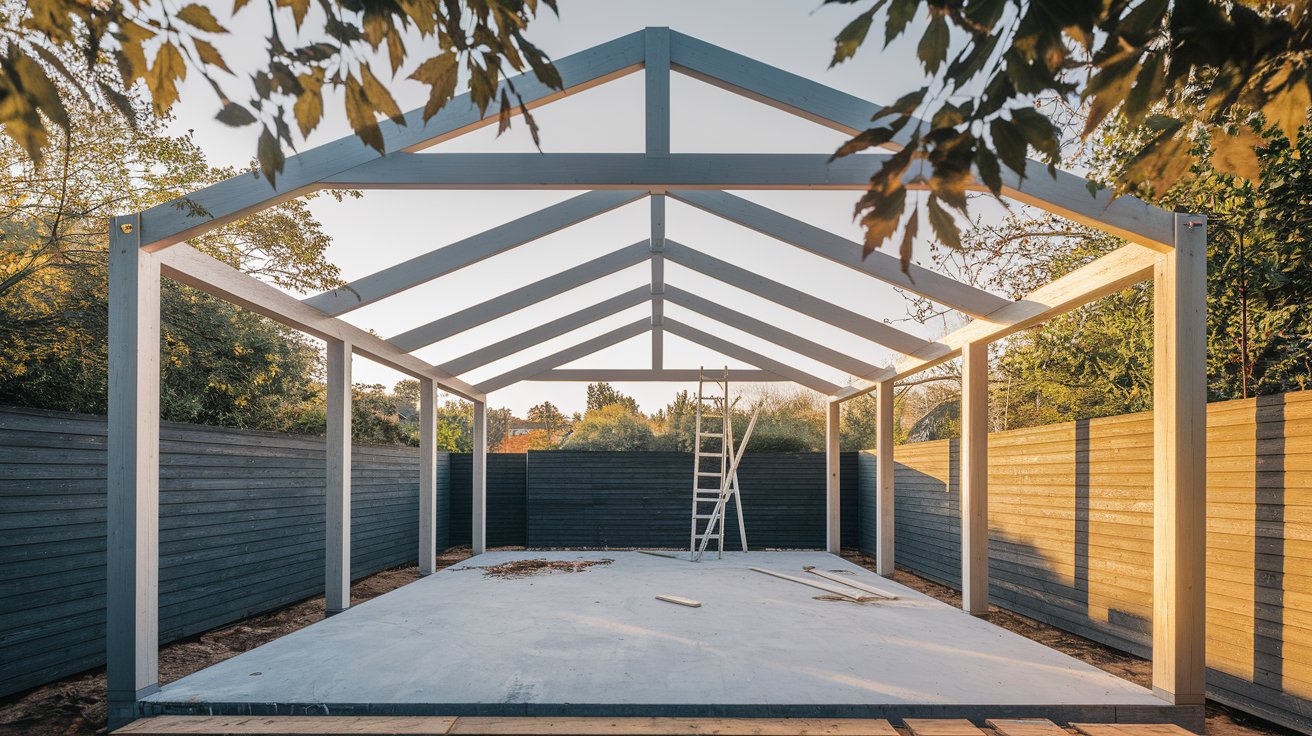
Secure posts vertically using post anchors or concrete. Attach beams across the top to create the frame skeleton. Ensure everything is level and square.
Construct gable trusses according to your roof pitch. Fix them to the ridge beam with appropriate fasteners. Space trusses according to your roofing material specifications.
Step 5 – Install Roofing Sheets and Flashings
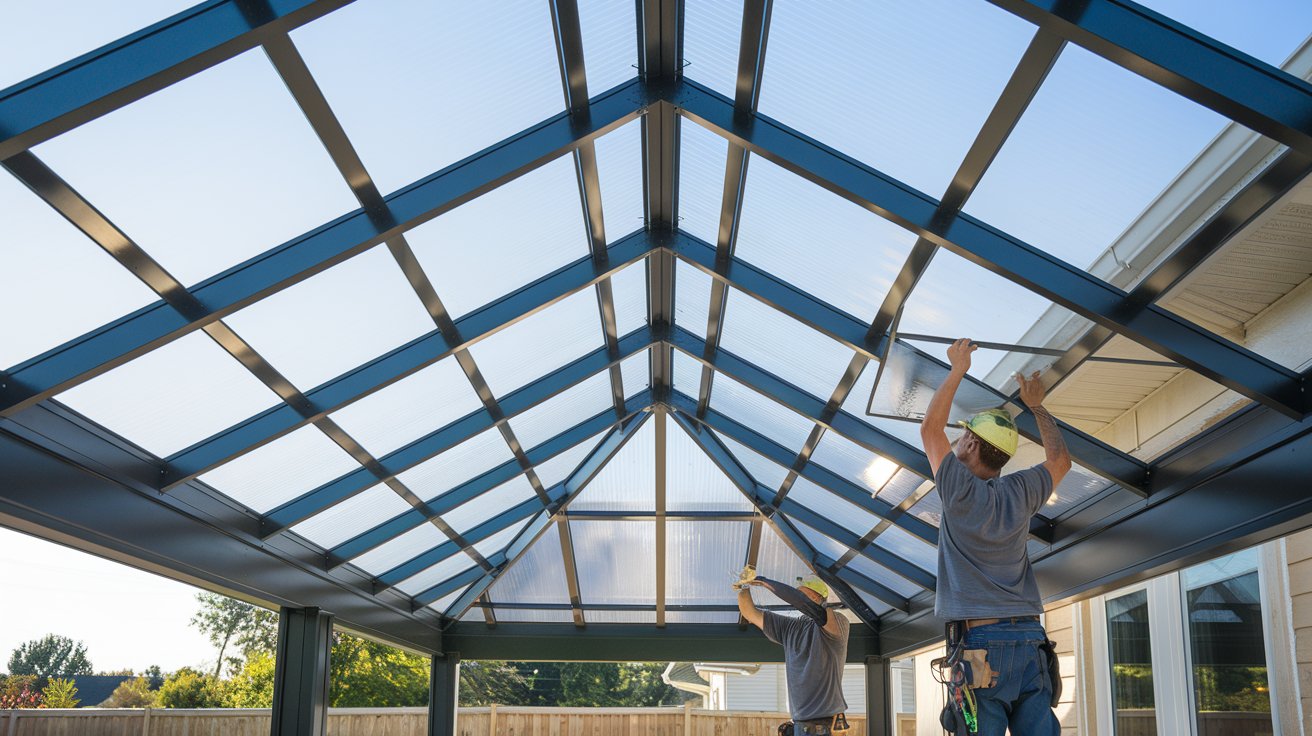
Fix roofing panels with proper overlap between sheets. This prevents water leaks during heavy rain. Use the correct screws with rubber washers for weatherproof seals.
Seal all joints and edges with weatherproof flashing. Pay special attention to where the new roof meets your house. Proper flashing prevents water damage to both structures.
Step 6 – Close In the Gable Ends
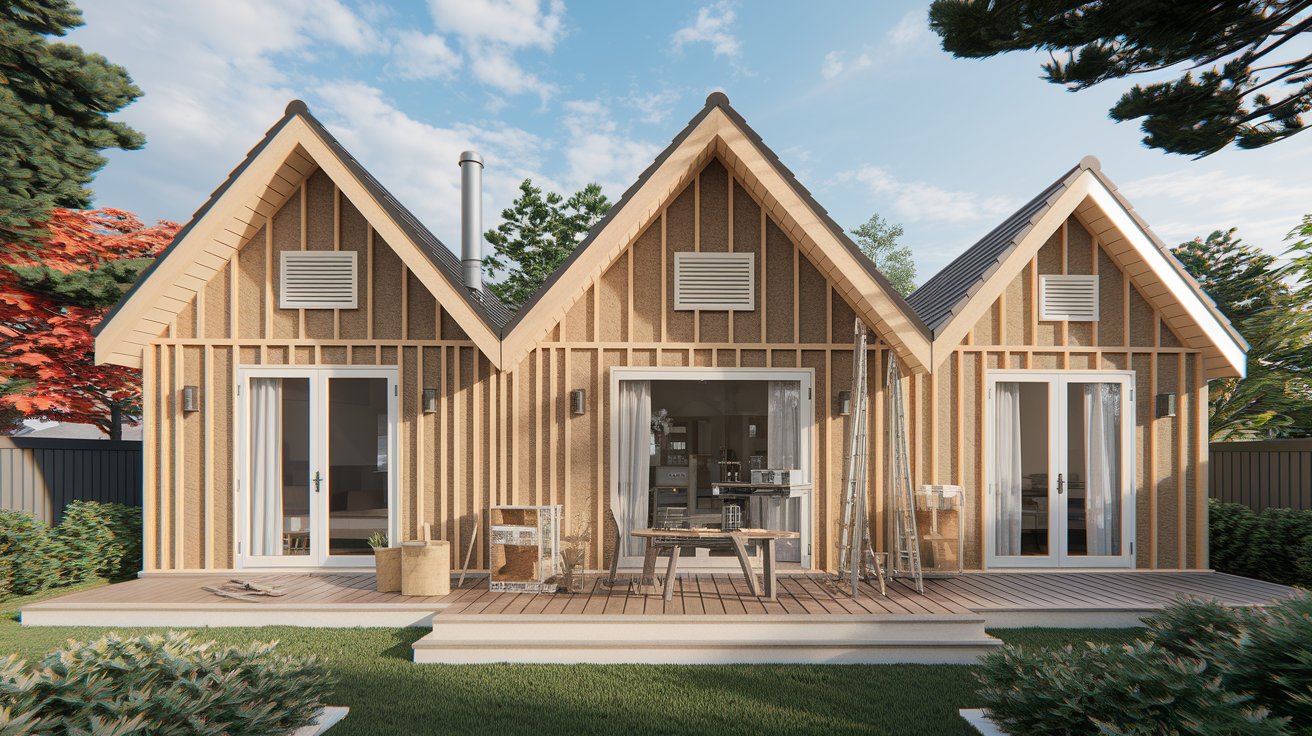
Frame the triangular gable ends with timber or steel studs. Attach your chosen cladding material securely. Ensure all edges are sealed against the weather.
Add vents, louvres, or small windows if you want airflow. Vents prevent moisture buildup while maintaining weather protection. Position them high for best results.
Step 7 – Finishing Touches and Weatherproofing
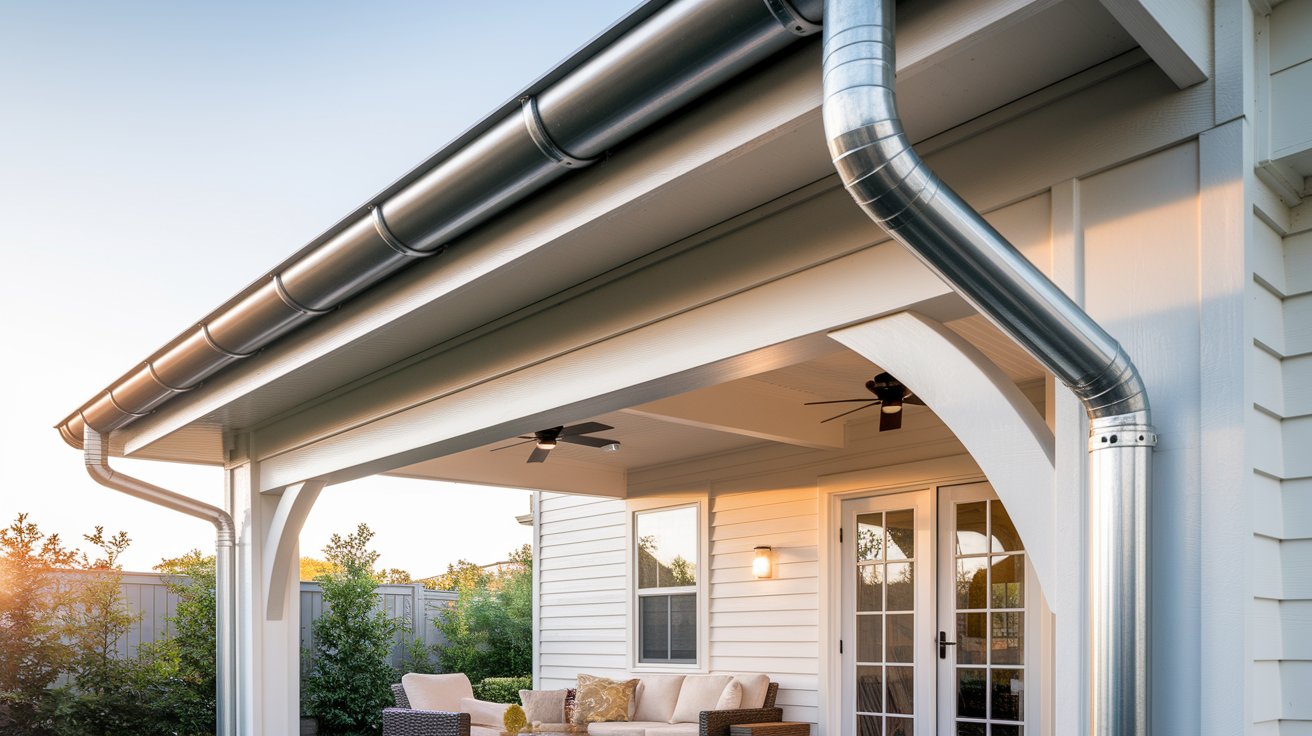
Paint or seal all exposed materials according to manufacturer recommendations. This protects against weather damage and extends lifespan.
Install gutters to channel water away properly. Add downpipes connected to drainage. Consider outdoor lighting or decorative trims for a polished, finished appearance.
Important Safety and Building Tips
Following proper safety procedures and building codes ensures your patio roof is safe, legal, and long-lasting.
- Always wear protective gear during construction, including safety glasses, gloves, and steel-toed boots.
- Safety glasses protect your eyes from debris and falling particles.
- Gloves prevent cuts and splinters when handling materials.
- Steel-toed boots protect your feet from falling materials and heavy tools.
- Secure ladders properly before climbing and never overreach while on a ladder.
- Have someone hold the ladder base when working at height to prevent falls.
- Falls cause serious injuries during DIY projects, so take ladder safety seriously.
Maintenance Tips for a Closed Gable Patio Roof
- Inspect joints, fasteners, and sealant twice a year for signs of wear or damage
- Tighten any loose screws or bolts before they cause bigger problems
- Check sealant around flashings and replace if cracked or missing
- Keep gutters and downpipes clean to prevent water overflow and damage
- Remove leaves, debris, and dirt that accumulate in gutters during autumn
- Flush downpipes with water to ensure proper drainage flow
- Repaint or reseal timber elements every 2 to 3 years, depending on weather exposure
- Look for signs of rot, warping, or insect damage in wooden components
Conclusion
I constructed my initial closed gable patio roof five years ago, which altered backyard usage. We use it all year in any weather.
Closed gable patio roofs are worth it. They add value to your home. They provide an outdoor living space that will actually be used and have the protection and style.
Ready to get started? This weekend, grab that measuring tape, then get designing. If you have any questions, drop down. I would be happy to help.
Frequently Asked Questions
What is the ideal pitch for a closed gable patio roof?
A minimum pitch of 5 degrees works for most roofing materials. Steeper pitches between 15 to 25 degrees improve water runoff and add more visual appeal.
How much does it cost to build a closed gable patio roof?
Costs range from $150 to $400 per square meter depending on materials and complexity. DIY construction saves on labor but requires time and skill.
Do I need council approval for a closed gable patio roof?
Most areas require building permits for permanent patio roof structures. Check with your local council before starting construction to avoid penalties or forced removal.
Can I attach a closed gable roof to my existing house?
Yes, most closed gable roofs attach directly to your house wall using ledger boards. Proper flashing where they connect prevents water leaks and structural damage.
What roofing material works best for closed gable patios?
Colorbond steel offers durability and low maintenance. Insulated panels provide better temperature control. Choose materials that match your home’s existing roof for visual cohesion.

